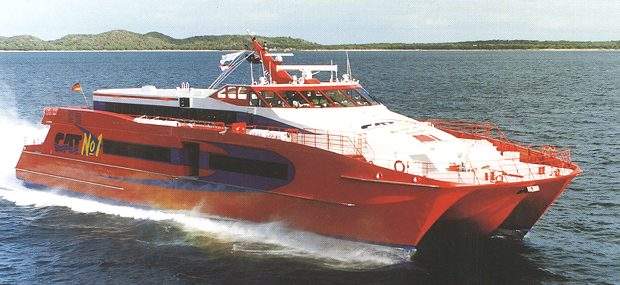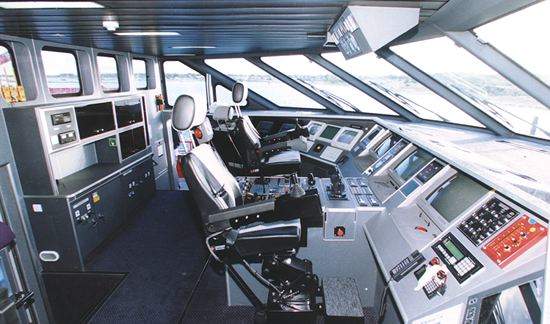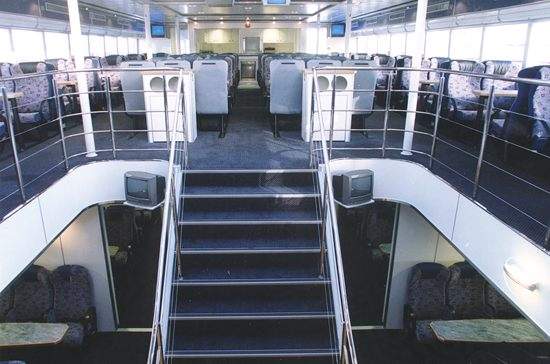The Cat No 1 was delivered to German company Reederei Norden-Frisia in May 1999. The vessel was the first 52m-long high-speed catamaran to be built by Austal Ships and was constructed at its Henderson yard outside Perth, Australia.
Norden-Frisia operates the vessel on a 42 nautical mile service between Cuxhaven at the seaward entrance to the River Elbe and the Heligoland islands just off the north west coast of Germany. The vessel is the company’s first fast ferry.
Facilities
A large skylight dome and atrium form the central features of the design while the main saloon has seating for 298 people, while the upper saloon can seat 134.
The maximum capacity of the vessel is 432 passengers. In addition to this, external seating aft on the upper deck is provided for 33 passengers. Passenger accommodation is carpeted throughout and is complemented with Amtico flooring.
Amenities for passengers on-board include a bar and kiosk aft on both decks, a galley and a toilet block on the main deck. Overhead, luggage racks are fitted along port and starboard aisles, and four luggage stowage areas are located externally, aft on the main deck.
The forward area of the main deck is fitted with quarters for ten crew members. These facilities include four single-berth cabins, four twin-berth cabins, a galley, mess and two toilets equipped with showers.
The vessel has a Viking evacuation system comprising four mini slides, ten 50-person liferafts and one 25-person liferaft. The 4m-long slides are located midships and aft, port and starboard on the main deck. The vessel has an overall length of 52.4m, length at the waterline of 45.4m and a very shallow draught of 1.5m.
Propulsion
The Cat No 1 achieved a service speed of 40kts during vessel trials. Her main propulsive power is through four MTU 16V4000 M70 diesel engines rated 2,320kW each at 2,000rpm. Each one powers a KaMeWa 71 SII waterjet via a Reintjes VLJ 930 gearbox.
The vessel has Austal’s rounded bilge and bulbous bow hull form, and a unique feature of the Cat No 1 is her middle bow hull-form, which only comes into effect in seas greater than 2m.
During sea trials, this feature completely eliminated slamming in seas with a wave height of between 2m and 2.5m.
The vessel is also fitted with a modified version of Austal’s Ocean Leveller ride control system. This features flush mounted foils forward and interceptors aft. The foils have been mounted flush with the keels so they do not increase the draught of the hull and exceed the maximum draught requirement of 1.5m stipulated by the operator for parts of the routes.
Automation and control
The wheelhouse is designed for a four-man operation with an electronic package that includes and MTU MCS-5 monitoring system, two Kelvin Hughes Nucleus2 6000 ARPA radar systems with S and X band antenna, a Nucleus2 5000 ECDIS and 5000A navigation equipment and charts, Navtex GMDSS, Leica DGPS Navigator and a Carl Zeiss night vision system.
The navigation equipment is similar to that installed on Jonathan Swift, the Austal auto ferry delivered to Irish ferries. Both catamarans have Ergopod trackerballs incorporated in the armrests of the captain’s and first officer’s seats for easy manipulation of information on the radar and ECDIS displays.







